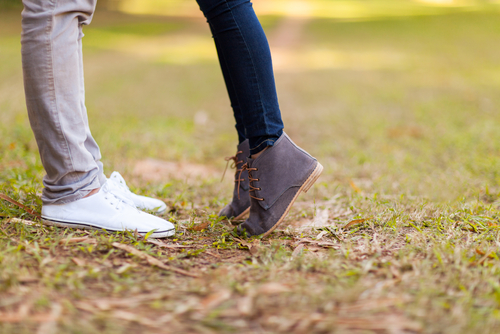Whether given as a greeting, a sign of affection, or tentatively in those first stirrings of attraction, kissing is universal. In many cultures, kisses on the cheek are a common form of saying hello or goodbye. Despite my European upbringing, I have always been a little wary of kissing strangers, even if it’s just blowing air or a light peck. There is that uncomfortable moment where you may not be so keen to engage in the ritual and you risk offending a newly-made acquaintance. Yes, I am speaking from experience. Maybe for me, kissing, whatever form it takes, is more personal and intimate. A gesture reserved for ‘special’ occasions. At the same time, one can think of many more unpleasant ways to say hello. For instance, if you are a cat or a dog, a sniff to the bum or a whiff of your breath may be the way to go. I suppose an air kiss to each cheek, the face, not the butt, isn’t so bad after all. It’s all about perspective.
Given that some kind of lip-smacking isn’t just for us, it begs the question, why do so many animals kiss? When it comes to greeting one another, be it through a kiss or a sniff, many species exchange a wealth of information about who they are, how healthy they are, what their hormone levels are, where they have been, and what they have eaten. Such is the power of even the simplest of kisses. Take prairie dogs, for example. Prairie dogs are known for their “greet-kiss” and it goes a little like this: two prairie dogs approach, they lock teeth, swap some saliva, and then inevitably, one of two things happens. They fight or they go about their business. When they fight, is this because one of them was a poor kisser? Not likely. It’s because those individuals don’t belong to the same social group.
When it comes to arousal, romance, and love, nothing is as momentous as that first kiss. It can rock your world or shatter your dreams. And oh how nerve-wracking it can be (Related: First Kiss)! What’s so important about that first kiss anyway?
Well, there is some evidence to suggest that the first romantic kiss holds quite a bit of weight and serves as a way to assess the long-term potential of a mate. What are we assessing? A kiss may let you decide, via touch, taste and smell, the quality of a potential mate. Scientists speculate that we get a ton of information through the saliva about hormone levels, health and genetic compatibility. Hmmm… more like prairie dogs than we thought. Not to mention simple compatibility based on how well you kiss together. And naturally we aren’t the only species to kiss for ‘love.’ And once you kiss, there is a suite of chemical reactions in the brain and body. Sparks really can fly!
Cardiocondyla elegans, a species of ant, has a decidedly special kiss. How does an ant kiss? Unlike bonobos that share our passion for tongue kissing, C. elegans plays antennae hockey to get in the mood. Although we don’t have antennae like this little ant, not all human cultures, past or present, embrace mouth-to-mouth contact as a sign of affection. For instance, in ancient Egyptian and several cultures today (e.g., some Inuit societies) sniffing each other’s breath, licking around the face, or simply rubbing faces is still the way to go. Regardless of what form your kiss takes, it’s thought that once a partner has been selected and you are in a relationship, kissing serves to maintain and strengthen the bond between you. So go ahead — kiss fervently with your mouth, sniff each other intensely, or rub noses with abandon. However you go about it, not only will you learn a lot about a potential mate, it will be sure to get your motor revving with your current partner.
For additional reading see:
Mercier, J. L., Lenoir, J. C., Eberhardt, A., Frohschammer, S., Williams, C., & Heinze, J. (2007). Hammering, mauling, and kissing: stereotyped courtship behavior in Cardiocondyla ants. Insectes sociaux, 54(4), 403-411.
Wlodarski, R., & Dunbar, R. I. (2013). Examining the possible functions of kissing in romantic relationships. Archives of sexual behavior, 42(8), 1415-1423.

